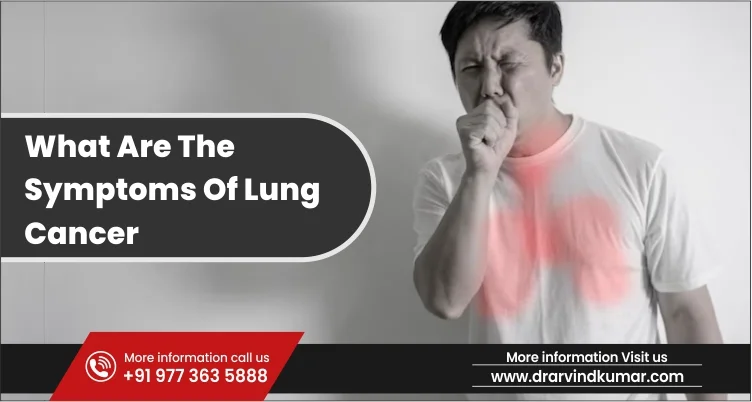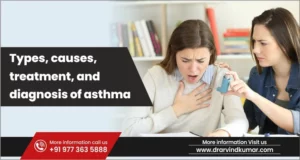Some individuals with early lung cancer do experience symptoms, but for the most part, lung cancer symptoms do not appear until cancer has spread. If you see a doctor as soon as your symptoms start, your cancer may be identified sooner, and you are likely to receive treatment that is more likely to be successful.
Depending on which section of the lung is affected and what form of lung cancer the patient has, early lung cancer signs may include a worsening cough or shortness of breath. The severity or intensity of these symptoms may increase as the disease progresses.
Lung cancer can also result in generalized symptoms, which are more widespread than localized ones. These might include appetite loss or overall exhaustion. Continue reading to find out more about the different The Symptoms Of Lung Cancer In Women?
Lung Cancer Early Symptoms
Due in part to the fact that the lungs have few nerve endings, the majority of lung cancers do not manifest symptoms until the illness is advanced. When lung cancer does show early symptoms, they may differ from person to person.
However, lung cancer early symptoms can include:
- A Lung cancer cough is a continuous new cough, one that intensifies, or one that alters an already chronic cough
- The presence of blood in the sputum can also signify it as being a lung cancer cough.
- Chest, back, or shoulder pain that gets worse when you chuckle, cough, or take deep breaths
- Sudden onset of shortness of breath during routine tasks
- Unexplained weight reduction
- Experiencing fatigue or weakness
- Reduced hunger
- Persistent lung diseases like bronchitis or pneumonia
- A raspy voice or wheezing
Less Common Lung Cancer Signs
- Inflammation of the face or neck
- Swallowing issues or discomfort when swallowing
- Finger clubbing, a change in the appearance of the fingers
It is crucial to visit a doctor even though the majority of these symptoms are more likely to be brought on by conditions other than lung cancer. It is important to keep an eye on lung cancer early symptoms. Early detection of lung cancer may increase the number of possible treatments.
Non-Small Cell Lung Cancer Symptoms
Before lung cancer signs appear, non-small cell lung cancers (NSCLC) may progress gradually over time.
Typical signs of non-small cell lung carcinoma include:
- Persistent coughing, especially when there is no clear reason for it, is often described as a lung cancer cough.
- A cough that exudes reddish sputum or blood (hemoptysis)
- Breathing difficulty or chest discomfort or lung cancer chest pain
- Breathing issues or lack of breath
- Fatigue or experiencing abnormally low energy levels
- A raspy voice or coughing
- Recurring lung illnesses, such as bronchitis or pneumonia
- A bone ache
The growth or expansion of NSCLC tumors may have an impact on other parts of the body and may produce some other types of signs:
Neurological alterations: Lung cancer has the potential to expand (metastasize) to the brain. Headaches and even convulsions could result from this. A large tumor pressing against a nerve may cause numbness or weakness in the limbs and legs.
Lump: When cancer is progressed, the lymph nodes may become infected. Tumors that are close to the skins surface can occasionally look lumpy.
Horner syndrome: Damage to the nerves from tumors is a possibility. Nerve damage is linked to a specific collection of symptoms known as Horner syndrome. A droopy eyelid and a smaller pupil size are frequent signs that only affect one side of the face. (the dark center of the eye).
Paraneoplastic syndromes: refer to a group of responses that can be brought on by chemicals produced by cancer cells. High blood calcium levels (hypercalcemia), excessive bone development, or blood clots are a few symptoms that may be present.
Small Cell Lung Cancer Symptoms
Most small cell lung cancer (SCLC) symptoms do not appear until the disease has advanced. As the illness progresses to remote organs, small-cell lung cancer signs worsen and continue to change.
Small cell lung carcinoma early signs:
- Persistent coughing
- Chest discomfort that worsens when you breathe deeply, laugh, or cough
- Hoarseness
- Unaccounted-for appetite decline and weight loss
- Coughing up rust-colored mucus or blood
- Breathing difficulty and lung cancer chest pain
- Feeling feeble or exhausted
- Bronchitis, pneumonia, or other recurrent illnesses
- Wheezing
Advanced SCLC symptoms include
- Bone discomfort.
- Dizziness, headaches, or weakened or numb extremities
- Jaundice
- Lumps near the clavicle or neck
Metastatic Lung Cancer Symptoms
The size, position, and type of metastatic lung cancer symptoms vary depending on the area of the body where cancer has metastasized. Approximately 30 to 40 percent of individuals with lung cancer will experience symptoms of metastasis, but this is not always the case.
- Bone discomfort, frequently in the vertebrae or ribs, may result from cancer spreading to the bones. Other signs of high calcium levels include fractures, constipation, or reduced alertness.
- Nausea, intense fatigue, a larger waistline, fluid retention in the hands and feet, and yellowing or itchy skin are all signs that the liver is malfunctioning.
- Headache, hazy or double vision, communication difficulties, or convulsions may be present if the brain or spinal cord is harmed.
Conclusion
Lung cancer symptoms can differ from individual to individual. Some individuals experience lung-related symptoms. Some individuals with lung cancer that has metastasized (spread to other parts of the body) experience symptoms unique to that area of the body. Some individuals merely experience general signs of illness. Most lung cancer patients do not exhibit signs like lung cancer chest pain until the disease has progressed. Most of these symptoms, though they appear as lung cancer, are typically brought on by illnesses other than lung cancer. However, seeing your doctor as soon as possible is crucial if you experience any of these issues so the reason can be identified and treated, if necessary.
Frequently Asked Questions
Can early lung cancer be found?
Lung cancer signs typically do not show until the disease has progressed to an incurable state, making early detection challenging. But in our lung cancer screening clinic, computed tomography (CT) scans are used to find potential lung cancer in smokers as early as feasible.
What variations of lung cancer are there?
Small-cell lung cancer and Non-small-cell lung cancer are the two major subtypes of lung cancers.
Non-small cell lung cancer occurs in up to about 85% of lung cancer cases. Squamous cell carcinoma, adenocarcinoma, and neuroendocrine tumors are included in this category.
Small-cell lung tumors account for about 15% of all cases. Compared to non-small-cell lung cancer, this form of cancer typically spreads more quickly.
What Preventative Measures Can You Take for Lung Cancer?
Even though smoking is the leading cause of lung cancer, the disease still affects many individuals who have never smoked or have never been around secondhand smoke. Additional measures you can take to avoid lung cancer include the following:
- Do a radon test on your house. Radon, a radioactive gas that can result in lung cancer, is produced when uranium naturally decays in earth and rocks.
- Stay away from toxins at work. Lung cancer risk is increased by exposure to toxins like asbestos, arsenic, chromium, and nickel.
- Maintain a fit lifestyle. This entails maintaining a healthy diet and engaging in regular exercise.
- Avoid exposure to Polluted air: Breathing polluted air is akin to smoking and can be responsible for Lung Cancer.

.webp)



